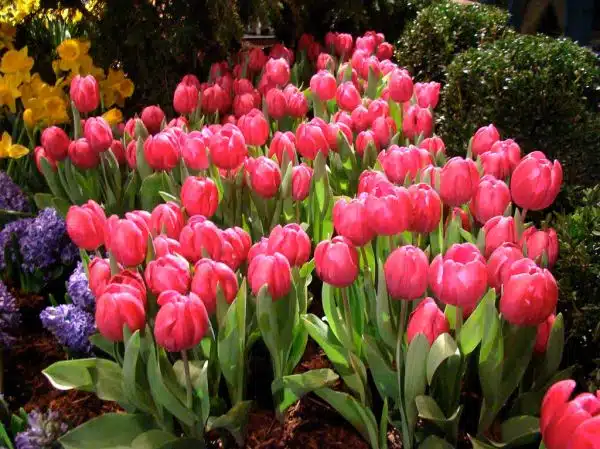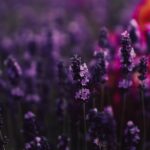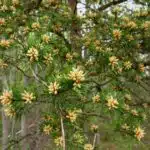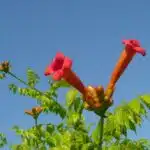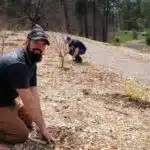Spring is a time of new beginnings, and what better way to welcome the season than with a burst of colorful flowers? Ephemerals, or plants that bloom for a short period of time in early spring before going dormant until the following year, are a favorite among gardeners looking to add some early color to their landscapes. With so many options available, it can be difficult to choose which ephemerals to plant. In this article, we will explore 19 of the best spring-flowering ephemerals that are sure to delight any gardener or nature enthusiast.
From woodland wildflowers to showy bulbs, these plants offer a range of colors and textures that will brighten up any landscape. Many of these spring ephemerals are also important sources of nectar for early pollinators such as bees and butterflies, making them an excellent choice for those looking to support native wildlife. Whether you’re planting a small garden bed or creating a large-scale landscape design, these 19 spring-flowering ephemerals are sure to provide stunning beauty and environmental benefits for years to come.
What Are Ephemerals?
Ephemerals are enchanting plants that bloom for a brief period before disappearing, without leaving any trace behind. These stunning plants are an exciting addition to any garden and are popular among horticulture enthusiasts. Their unique characteristic of fleeting beauty makes them an excellent choice for gardeners looking to create a dynamic landscape.
The term “ephemeral” refers to short-lived plants that thrive in the spring season. These plants usually grow from bulbs or tubers and bloom in early spring when the temperature starts to rise. Some examples of ephemerals include bluebells, snowdrops, crocuses, and tulips. They have adapted themselves over time to survive in harsh weather conditions such as heavy snowfall or strong winds.
Ephemerals add vibrancy and color to gardens by creating an awe-inspiring display of colors that span across a spectrum of hues, from bright yellows to deep purples. Their unparalleled beauty can transform any dull space into a magnificent sight. Moreover, they assist in pollination by attracting bees and other insects, contributing positively towards the ecosystem. Planting ephemerals is not only visually appealing but also serves as a sustainable way of supporting the environment.
With their unique characteristics, ephemerals offer multiple benefits for gardeners who seek diversity and sustainability in their landscapes. Understanding these benefits will help you make informed decisions about planting this fascinating group of plants in your garden.
Benefits Of Planting Spring-Flowering Ephemerals
Spring-flowering ephemerals are useful for brightening gardens with their vibrant, colorful blooms. Adding these plants also provides benefits for the local ecosystem, as they are very effective at attracting pollinators. Furthermore, care for these plants is low-maintenance, generally requiring only occasional watering and pruning. Moreover, their deep root systems provide stability to the soil and can help to protect against soil erosion. As they are only active during the spring, they die back and help to create space for other plants to grow. As such, they can be a great addition to any garden.
Brightening Gardens
When it comes to brightening gardens, planting spring-flowering ephemerals is a must. These plants are known for their ability to add color and vibrancy to any outdoor space. Designing arrangements with these beauties is not only easy but also fun as there are several species to choose from. With their short bloom time, gardeners can mix and match different colors and textures to create stunning displays.
Selecting color schemes is also an important aspect of creating a beautiful garden with spring-flowering ephemerals. Shades of pink, purple, blue, yellow, and white are popular choices for these plants. Gardeners can choose a monochromatic scheme by selecting flowers of the same hue or opt for complementary colors like pink and blue or yellow and purple. Additionally, pairing these ephemerals with other early blooming perennials like tulips and daffodils can also create a cohesive look.
In conclusion, planting spring-flowering ephemerals is an excellent way to brighten up any garden. Gardeners can have fun designing arrangements with the various species available while playing around with color schemes that complement each other well or stand out in contrast. With their short bloom time, these plants are perfect for adding bursts of color to a garden before other perennials start blooming.
Ecosystem Benefits
Spring-flowering ephemerals offer not only aesthetic benefits but also ecosystem benefits. These plants play an important role in supporting wildlife and conservation efforts. They provide food and shelter for pollinators such as bees, butterflies, and hummingbirds, which are essential for maintaining a healthy ecosystem. Many of these species have also been threatened by habitat loss and climate change, making the planting of spring ephemerals a valuable contribution to conservation efforts.
In addition to providing food and shelter for pollinators, spring-flowering ephemerals can help improve soil health. As these plants grow, they enrich the soil with nutrients and organic matter. They also help prevent erosion by stabilizing the soil with their root systems. Moreover, they require little maintenance once established, reducing the need for chemical fertilizers or pesticides that can harm the environment.
In conclusion, planting spring-flowering ephemerals not only enhances the beauty of a garden but also contributes to the health of local ecosystems. By providing habitat for pollinators and improving soil health, these plants support conservation efforts while adding color and vibrancy to outdoor spaces. Investing in these species is a small but impactful way to serve our communities while beautifying our surroundings.
Low Maintenance Care
The benefits of planting spring-flowering ephemerals are vast, and low maintenance care is one such benefit. These plants require little attention once established, making them an ideal addition to any garden or landscape. The benefits of low maintenance care include reduced time and effort spent on upkeep, as well as less need for chemical fertilizers or pesticides that can harm the environment.
To ensure easy upkeep of spring-flowering ephemerals, there are a few tips to keep in mind. First, choose species that are well-suited to your local climate and soil conditions. This will reduce the need for extra watering or other interventions. Second, plant in groups rather than scattered throughout a garden; this will create a more cohesive look and make it easier to maintain. Finally, consider adding a layer of mulch around the plants to help conserve moisture and suppress weeds.
By incorporating these tips for easy upkeep into their gardening practices, homeowners can enjoy the many benefits of planting spring-flowering ephemerals without sacrificing precious time or resources. Low maintenance care not only makes these plants more accessible but also helps promote sustainable gardening practices that serve our communities and the environment alike.
Bloodroot (Sanguinaria Canadensis)
Spring-flowering ephemerals are a great addition to any garden for several reasons. Apart from their beauty, they bring benefits like natural pest control and soil improvement. These plants also come in various colors, making them ideal for creating a visually stunning landscape. Despite their short lifespan, spring ephemerals can make a significant impact on the ecosystem.
One of the best spring-flowering ephemerals is Bloodroot (Sanguinaria canadensis). This plant is known for its medicinal properties that have been used by Native Americans since ancient times. The root contains an alkaloid called sanguinarine, which has antiseptic and anti-inflammatory properties, making it useful in treating sore throats, coughs, and other respiratory conditions. Aside from its medicinal uses, Bloodroot is also a beautiful plant that produces white flowers with yellow centers.
Growing bloodroot in containers is another option for those who want to enjoy this plant’s beauty without having to worry about its invasive nature. Container-grown Bloodroot needs well-draining soil mix with compost added to enhance its growth. It also requires regular watering and partial shade to thrive. With proper care, this plant can bloom year after year and provide an excellent focal point for any garden design.
- Bloodroot has medicinal properties that have been used since ancient times.
- The root of the bloodroot contains sanguinarine which has antiseptic and anti-inflammatory properties.
- Growing bloodroot in containers is an option if you want to avoid its invasive nature.
In summary, Bloodroot is a fantastic addition to any garden or medicine cabinet due to its many uses and stunning beauty. Whether grown in the ground or in containers, this plant offers unique benefits that cannot be found elsewhere. In the next section, we will explore another spring-flowering ephemeral – Virginia Bluebells (Mertensia virginica) – and how it can add value to your landscape.
Virginia Bluebells (Mertensia Virginica)
Mertensia virginica, commonly known as Virginia Bluebells, is a species of bluebells native to North America. It is a spring-flowering ephemeral that grows to a height of 12 to 24 inches, with a clump-forming habit and elongated, oblong-lanceolate leaves. The flowers are deep blue to pinkish-purple with yellow anthers, blooming in late spring. Virginia Bluebells is best grown in moist and semi-shaded areas, with soil that is moist to wet and enriched with organic matter. This species is beneficial to gardens and landscapes, as it attracts pollinators and brings an early burst of color to the spring season.
Appearance
Virginia Bluebells (Mertensia virginica) are one of the most beloved spring-flowering ephemerals, admired for their colorful blooms and unique shapes. The flowers of the Virginia Bluebells bloom in clusters, creating a beautiful display of pink buds that open into trumpet-shaped, sky-blue blossoms. The bright and cheerful flowers are known to attract butterflies and hummingbirds, making them a popular choice for gardeners who want to add some life to their landscape.
The leaves of the Virginia Bluebells are also noteworthy for their unique shape. They start out as small, round leaves at the base of the plant but grow larger and more elongated as they climb up the stem. The leaves are a light green color with a slightly waxy texture, which adds to their overall appeal. As the plant matures, it can reach heights of up to 24 inches tall and spread out up to 18 inches wide.
In addition to their stunning appearance, Virginia Bluebells are also easy to care for and adapt well to different growing conditions. They thrive in moist, well-drained soil and prefer partial shade or filtered sunlight. Once established in a garden bed or container, they require minimal maintenance other than regular watering during dry spells. Overall, Virginia Bluebells are an excellent choice for anyone looking to add some colorful blooms and unique shapes to their garden or landscape.
Growing Requirements
When it comes to growing Virginia Bluebells, there are a few important considerations to keep in mind. First of all, these plants are adaptable and can thrive in a variety of conditions, but they do require moist, well-draining soil. If you’re planting them in the ground, be sure to prepare the soil ahead of time by adding organic matter such as compost or leaf mold. This will help to improve soil structure and ensure that water drains away properly.
If you’re interested in container gardening with Virginia Bluebells, you’ll need to choose a pot that is large enough to accommodate their root system. It’s also important to use a high-quality potting mix that provides good drainage and nutrients for the plants. When planting in containers, be sure to water regularly and monitor the moisture levels closely as potted plants can dry out more quickly than those planted directly in the ground.
Overall, with proper soil preparation and care, Virginia Bluebells can easily thrive in your garden or containers. Just be sure to provide them with adequate moisture and avoid planting them in areas where they may be exposed to full sun for extended periods of time. By following these simple steps, you can enjoy the beautiful blooms and unique shapes of Virginia Bluebells year after year.
Benefits
Virginia Bluebells are not only beautiful to look at, but they also offer a variety of benefits for gardeners and the environment alike. One of the main benefits of growing Virginia Bluebells is their ability to attract pollinators such as bees and butterflies. The unique trumpet-shaped flowers provide an excellent source of nectar, making them a valuable addition to any garden looking to support local wildlife.
In addition to their pollinator-friendly properties, Virginia Bluebells also offer aesthetic benefits for gardeners. Their striking blue-purple blooms add a pop of color to any landscape, and their unique shape and foliage make them stand out from other plants in the garden. They’re also relatively low-maintenance, making them an ideal choice for those new to gardening or looking for easy-to-care-for plants.
From an environmental perspective, Virginia Bluebells can have a positive impact on soil health. As they grow, they help to break up compacted soil and improve drainage, which can be beneficial in areas with heavy clay soils. They’re also known to be effective at filtering pollutants from water sources, making them useful in rain gardens or near bodies of water that may be impacted by runoff.
Overall, growing Virginia Bluebells offers a range of benefits for both gardeners and the environment. Whether you’re looking to attract pollinators or simply add some color and interest to your landscape, these versatile plants are sure to deliver with proper gardening techniques. With their unique shape and foliage, as well as their ability to improve soil health and filter pollutants, it’s no wonder that Virginia Bluebells are becoming increasingly popular among horticulture enthusiasts.
Trout Lily (Erythronium Americanum)
The Trout Lily, or Erythronium americanum, is a spring ephemeral that belongs to the lily family. It is also known as ‘Dogtooth Violet’ or ‘Adder’s Tongue.’ This plant gets its name from the mottled leaves which resemble a trout’s back. The Trout Lily has large yellow flowers that bloom in early spring, just before the tree canopy leafs out.
The Trout Lily grows well in moist, well-drained soil and prefers shady areas with some sunlight exposure. It is often found growing in hardwood forests and along stream banks. The plant can be propagated through division of bulbs or seeds. Once established, it can form dense colonies that provide a carpet of yellow blooms in early spring.
Uses of Trout Lily include naturalizing woodland gardens, providing early season nectar for pollinators such as bees and butterflies, and as an edible wildflower. Varieties of Trout Lily include Erythronium dens-canis (dog’s tooth violet) which has pink or white flowers and Erythronium albidum (white trout lily) which has pure white petals with yellow centers.
Moving forward, Dutchman’s Breeches (Dicentra cucullaria) are another popular spring ephemeral that thrives in similar growing conditions as the Trout Lily.
Dutchman’s Breeches (Dicentra Cucullaria)
Dicentra cucullaria, commonly known as Dutchman’s Breeches, is a spring ephemeral that is native to eastern North America. This plant gets its name from the unique shape of its white and pink flowers, which resemble upside-down breeches. Dutchman’s Breeches grow in moist woodland areas and can often be found growing alongside other spring ephemerals like bloodroot and trillium.
Propagation methods for Dutchman’s Breeches include both seeds and division. Seeds should be sown in the fall or early winter, while division should be done in the early fall or early spring. Ideal growing conditions for this plant include partial shade or filtered sunlight and well-draining soil that is rich in organic matter. It is important to keep the soil consistently moist but not waterlogged.
In addition to their striking appearance, Dutchman’s Breeches also serve an important ecological purpose by providing an early source of nectar for pollinators like bees and butterflies. They are also deer resistant, making them a great addition to gardens where deer are a problem. Overall, with their unique appearance and important ecological role, Dutchman’s Breeches are a valuable addition to any garden that experiences mild winters and has appropriate growing conditions.
- Add a touch of whimsy to your woodland garden with the unique shape of Dutchman’s Breeches flowers.
- Provide vital nectar for pollinators like bees and butterflies by planting this native species.
- Enjoy a deer-resistant plant that thrives in moist woodland areas.
- Use propagation methods like seed sowing or division to share the beauty of Dutchman’s Breeches with others.
This makes it clear why Dicentra cucullaria is an excellent choice for those looking to add some interest to their gardens during the spring season. However, there are other spring ephemerals worth considering as well, such as spring beauty (Claytonia virginica).
Spring Beauty (Claytonia Virginica)
As we move on from discussing Dutchman’s Breeches, we come to another spring-flowering ephemeral that is worth mentioning: Spring Beauty (Claytonia virginica). This plant is a delightful sight in the early spring, with its delicate pink and white flowers blooming in woodland areas across North America. Its leaves are also quite attractive, with a lance-shaped appearance and a bright green color.
Spring Beauty has a variety of uses. It is an important food source for early pollinators such as bees and butterflies, and it has also been used medicinally by Indigenous peoples for coughs and other respiratory ailments. In addition, it can be added to salads or cooked as a potherb, making it a versatile plant that serves both ecological and culinary purposes.
One of the key differences between Spring Beauty and other ephemerals is its ability to colonize quickly. While some ephemerals may take years to spread across an area, Spring Beauty can form large patches within just one season. This makes it an excellent choice for planting in naturalized areas or for use in erosion control projects. With its beautiful blooms, useful properties, and unique growth habits, Spring Beauty is truly a standout among spring-flowering ephemerals.
As we continue our exploration of the best spring-flowering ephemerals, our next stop will be Wild Columbine (Aquilegia canadensis). This striking plant features red and yellow flowers that resemble an upturned bell, making it a favorite of many gardeners. But there’s more to this plant than just its beauty – stay tuned to learn about its fascinating history and uses!
Wild Columbine (Aquilegia Canadensis)
Wild Columbine (Aquilegia canadensis) is a spring ephemeral native to North America that typically blooms in late April to May. This herbaceous perennial features unique flowers that resemble small, red and yellow lanterns hanging from slender stems. The flowers’ nodding habit makes them an excellent choice for planting on slopes or in rock gardens where the blooms can be viewed from underneath.
Growing tips for Wild Columbine include planting it in well-drained soil, as wet conditions may lead to root rot. It prefers partial shade but can tolerate full sun if the soil is kept consistently moist. When selecting a site for planting, consider its height and placement, as Wild Columbine can grow up to 2 feet tall and spread outwards up to 1 foot wide.
One of the plant’s unique features is its ability to attract hummingbirds with its bright red nectar-filled spurs. Additionally, it has been used for medicinal purposes by Native Americans who used the leaves and roots as a poultice to treat skin irritations and sore throats.
- Here are four ways you can incorporate Wild Columbine into your garden:
- Plant it together with other spring ephemerals like Virginia bluebells or bloodroot for a colorful display.
- Add it to woodland gardens where its dainty foliage complements larger-leaved plants like ferns.
- Use it as a naturalizing plant in areas where it can self-seed freely and create colonies of wildflowers.
- Integrate Wild Columbine into container gardens alongside other perennials like primroses or creeping phlox.
As we continue exploring the world of spring ephemerals, we come across another fascinating plant: jack-in-the-pulpit (arisaema triphyllum).
Jack-In-The-Pulpit (Arisaema Triphyllum)
As we bid adieu to the vibrant Wild Columbine, another beautiful spring ephemeral takes center stage. Jack-in-the-Pulpit is a fascinating plant that is sure to capture your attention. This unique plant boasts a tall green and white striped spathe that encloses a spadix with tiny flowers.
Growing requirements for Jack-in-the-Pulpit are quite specific. They thrive in partial to full shade and prefer moist, well-drained soil. It’s important to note that they can be slow to establish and may take a few years before producing their signature blooms. However, once established, they can live for decades.
Propagation methods for Jack-in-the-Pulpit include dividing mature plants or planting seeds in the fall. When dividing plants, it’s best to wait until they have finished flowering and then dig up the tubers carefully ensuring not to damage them. Planting seeds requires patience as it can take several years before the plants are large enough to flower.
As with any plant, proper care is essential for its success. Jack-in-the-Pulpit should be watered regularly during the growing season and mulched in the fall to protect against cold temperatures. Additionally, removing any dead foliage in the fall will help prevent disease from developing. With these tips in mind, you’ll be sure to enjoy this stunning spring ephemeral year after year.
Tips For Planting And Caring For Spring-Flowering Ephemerals
Planting and caring for spring-flowering ephemerals requires careful consideration of design tips and the best locations. These plants are known for their short blooming period, making them perfect for adding a burst of color to your garden during the early spring season. When deciding on a location for planting these ephemerals, it is important to choose an area with well-draining soil that receives partial to full sunlight.
Design tips also play a crucial role in successfully growing spring-flowering ephemerals. These plants add visual interest when planted in groups or clusters, creating a stunning display of color in your garden. Additionally, they can be used as a ground cover or as accents to complement other plants in your landscape design. When choosing which ephemerals to plant, consider their height and spread to ensure they fit well within the designated space.
To care for spring-flowering ephemerals, it is important to provide consistent moisture during their growing season. A layer of mulch can help retain moisture while also suppressing weeds around the plants. It is also recommended to deadhead spent blooms regularly to encourage new growth and prolong blooming time. With proper care and attention, these short-lived yet beautiful flowers will bring joy and beauty to your garden every year without fail.
Conclusion
Spring-flowering ephemerals are a gift from nature, offering a fleeting but breathtaking display of beauty. These plants emerge from the ground in early spring, bloom for a brief period, and then disappear until the following year. Planting these ephemerals in your garden brings not only aesthetic pleasure but also important ecological benefits such as pollination and habitat creation.
Among the best spring-flowering ephemerals are bloodroot, Virginia bluebells, trout lily, spring beauty, wild columbine, and jack-in-the-pulpit. Each with its unique characteristics and charm, these plants are easy to care for and add an enchanting touch to any garden. So why not take advantage of this natural spectacle and bring it into your own backyard? Planting spring-flowering ephemerals is not only good for you but also for the environment – a perfect win-win situation!
Image Credits
- “Spring Flowers” by JeepersMedia (featured)

